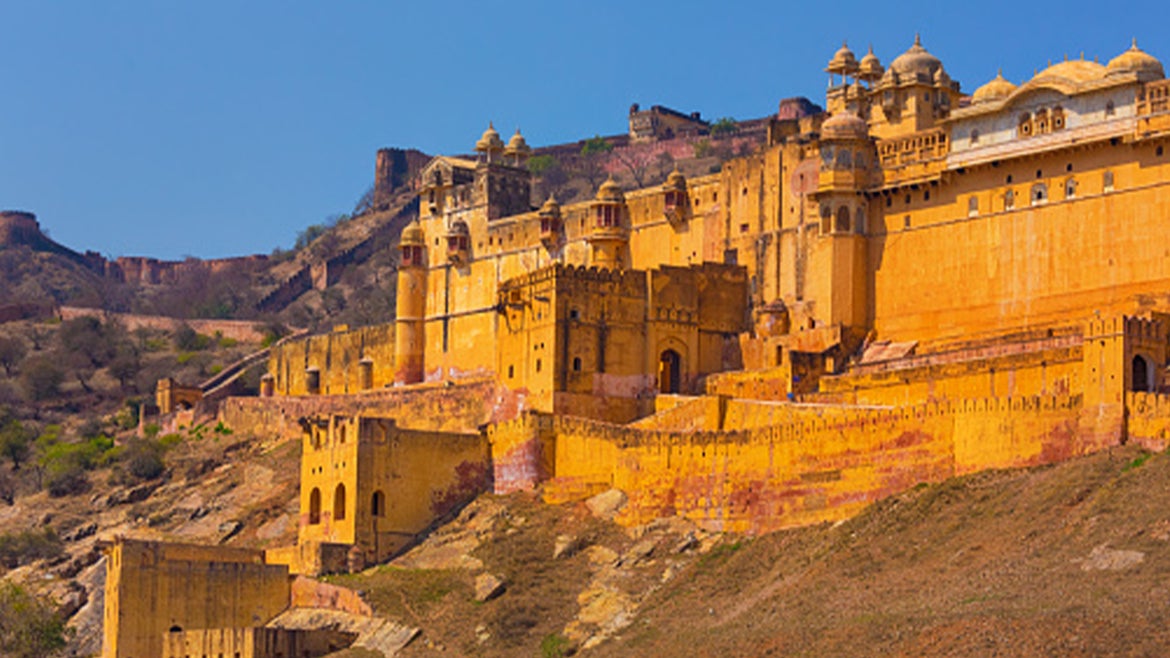Lightning strikes are most prevalent during India’s monsoon season, June through September, a period marked by massive rainfall.
Eighteen people were killed and others injured when a lightning bolt struck a popular tourist attraction in Northern India while tourists were reportedly taking selfies, officials said Monday.
The deadly lighting strikes hit Amber Fort, also known as Amer Fort, a 12th-century fort located on a hilltop that offers panoramic views of the city of Jaipur in Rajasthan which attracts thousands of visitors each year, Reuters reported.
At least 27 people were on the tower and on the wall of the fort when the incident took place. Some of the victims reportedly jumped to the ground when the lightning-sparked, according to the BBC.
"It was already raining when the people were there. They huddled in the towers as the rainfall intensified," a senior Jaipur police officer said, CBS News reported. "Some of the injured were left unconscious by the strikes. Others ran out in panic and extreme pain.”
Reuters TV partner ANI captured a video that featured empty shoes left at the watchtower by those who were killed, The New York Post reported.
Many of those who lost their lives were young people and were among the 76 people killed by lightning strikes since the annual monsoon season began in June, officials said, CBS News reported.
Lightning strikes are not uncommon in India, particularly in rural and agricultural regions. At least 2,000 citizens die annually from lightning strikes, The New York Post reported.
Lightning strikes are most prevalent during India’s monsoon season, June through September, a period marked by massive rainfall and intense lightning. Although the rain is critical to South Asia’s water supplies it is also marked by widespread death and destruction, CBS reported.
This weekend, in the neighboring state of Uttar Pradesh, at least 42 people were killed by lightning strikes. Seven children were killed by lightning in two other incidents in the state on Sunday night, Rajasthan's Chief Minister Ashok Gehlot said on Twitter, according to reports.
According to the Indian Meteorological Department (IMD), data shows that lightning strikes have increased 30% to 40% in approximately 30 years, due in part some experts say to climate change, according to the BBC.
In 2018, the southern state of Andhra Pradesh recorded 36,749 lightning strikes in just 13 hours. And, more than 100 were killed by lightning-related incidents in two states in June 2020, the BBC previously reported.
Chief ministers of Uttar Pradesh and Rajasthan and India's Prime Minister Narendra Modi announced compensation and assistance for the victims' families in a tweet on Sunday.
"Saddened by the loss of lives due to lightning in parts of Madhya Pradesh. The State Government will provide all possible assistance to the affected. From the PMNRF, Rs. 2 lakh would be given to the next of kin of the deceased, and Rs. 50,000 would be given to the injured," Prime Minister Modi said.






